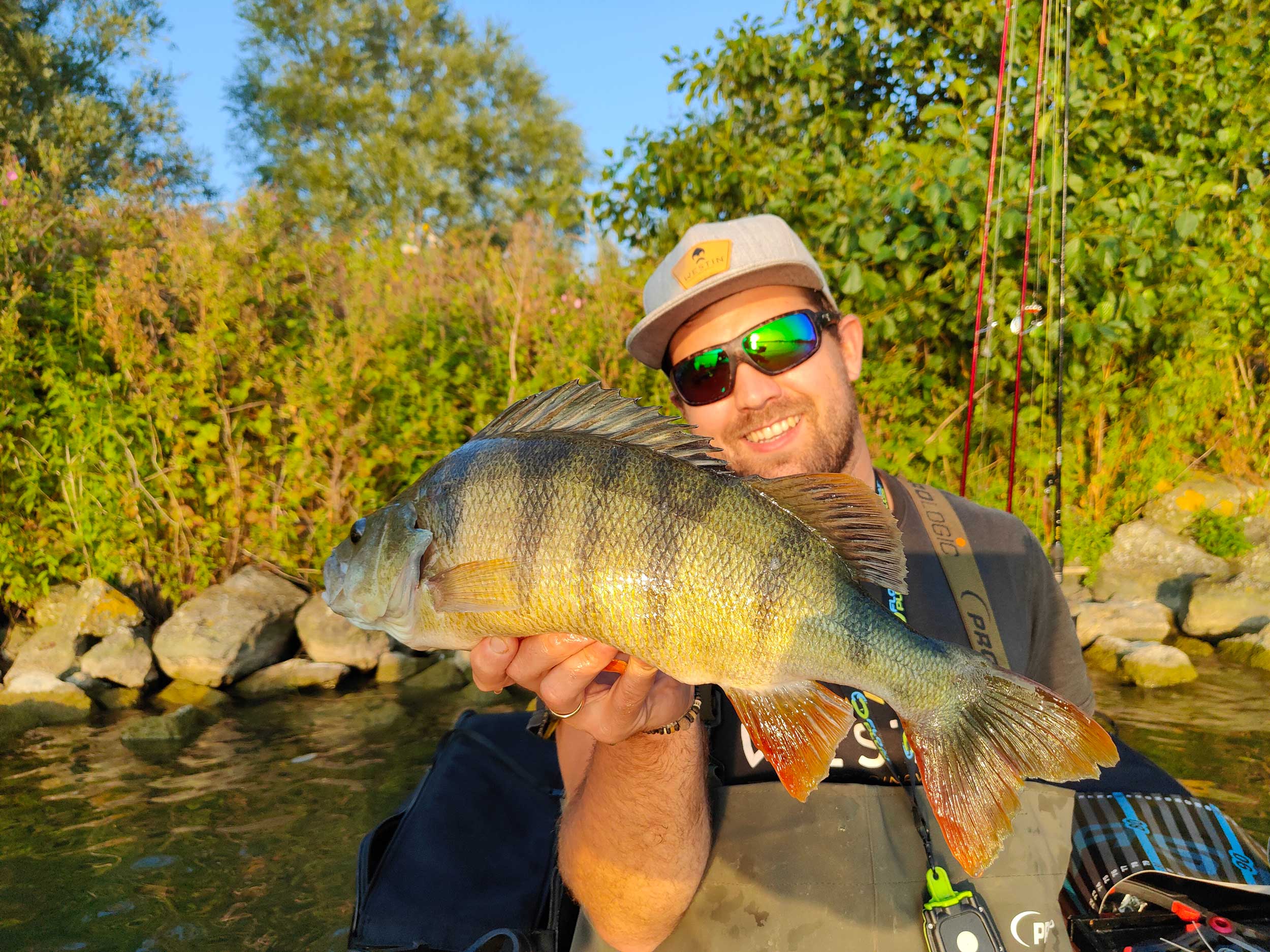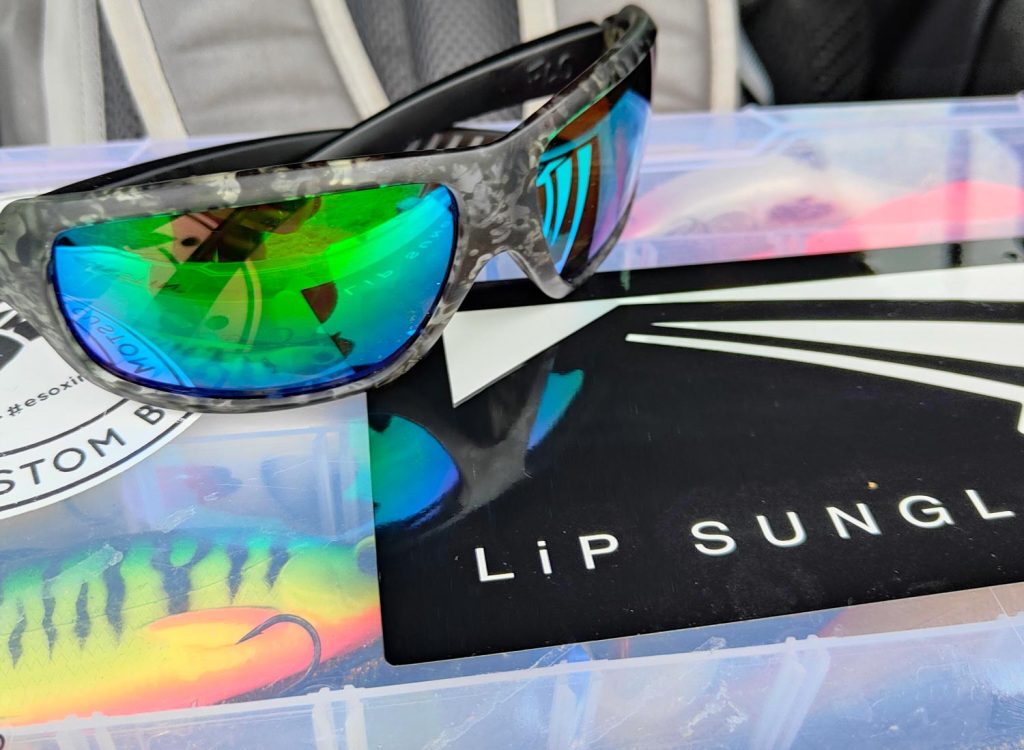There’s more to choosing the best fishing sunglasses than meets the eye.
If you’re the type of angler that gets up at the crack of dawn (or even earlier) and fishes your heart out until the sun has set again, then you’ll probably have a long shopping list of functionalities for your fishing eyewear.
Sunglasses are not only about protecting your eyes from UV radiation. Choosing well suited sunglasses for your chosen fishing discipline will also increase your casting accuracy, boost your observation skills and improve your chances of putting more fish on the bank.
We’ve broken down the top 5 considerations you should have in mind when selecting the perfect angling eyewear.
1. Frame: Choose the right size, shape and material
Aside from offering a comfortable fit, the ideal fishing sunglasses will have a frame that closely contours the shape of your head. This wrap shape serves a dual purpose.
Most importantly, it will restrict the amount of visible light (and UV radiation and dare we say it – the occasional miscast lure!) that can penetrate behind the lenses from the sides, top and bottom of the frame. This will keep your eyes protected and reduce distractions in the form of reflections on the inner lens surface, which in turn reduces eye fatigue – allowing you to maintain your focus. We all know that bobbers and floats can disappear and reappear in the blink of an eye. Was that a nibble? Or did you just imagine the float disappeared from view for a fleeting moment?
A close-fitting wrap shape will also prevent airborne particles and insects from entering the eye and will also reduce drag at the sides of the frame when it is windy. The best fishing sunglasses will be so comfortable and functional that you’ll forget to notice that you’re wearing them after a few minutes.
There’s another dimension to your choice of frame which you may not have previously considered. As with any piece of equipment, accidents happen from time to time. Modern frame materials such as thermoplastic nylon offer incredible durability, shape memory and even floatability. Accidentally stepping on your sunglasses or dropping them over the side of boat no longer means that your sunglasses are goners.
In summary, it’s wise to choose a frame that is comfortable, closely contours the head, and which is made from a robust material that is capable of withstanding some abuse and the occasional jettison / man overboard. Our floating FLO model fits the bill perfectly – Check out our FLO watershades
2. Lenses: Lens materials and base lens properties
This is a huge topic so we’ll condense it into two simple questions. “What lens material is best suited to freshwater fishing”, and “which base lens properties are most suited to the type of fishing that I do”?
Glass lenses, while offering great visual clarity and resistance to scratches, are on the heavy side, so they’re not ideal for pootling around the countryside, through brambles, dells, rivers and streams with your fishing gear.
Polycarbonate has historically been recognised as the most suitable lens material for outdoor pursuits like fishing as it has excellent impact resistance. This material is designed for the outdoor life. In recent years, nylon has become a popular alternative to polycarbonate, due to its lighter weight and better visual clarity while also maintaining good impact resistance.
For the most suitable base lens properties, the answer lies in looking at your local fishing environment (or the environment where you plan to go fishing), and making your choice based on those elements. In general terms, grey lenses give a neutral tone and are suited for bright and sunny conditions, and brown / amber lenses are suited to more variable conditions and if you like enhanced contrast. Rose, violet and copper lenses also enhance contrast, making some colours ‘pop’ while subduing others – this can have a positive effect in reducing eye fatigue if you choose your base colour wisely. It may also help you pick out your bobber on the surface in low contrast lighting conditions. Here are some suggested lens combinations based on different environmental conditions:
Lenses that have been ‘decentered’ are ideal for wrap fit sunglasses, because the sweet spot is shifted from the middle of the lens to an optimized position in front of the eye, guaranteeing distortion free vision. With decentered lenses, you are far more likely to notice that ever-so-quick nibble on your bait.A final word about lens curvature and how this might affect your lens choice. With a wrap fit frame, the lenses are required to be curved in the same arc as the frame. This curvature can create distortion and aberration which is especially noticeable in poorly crafted lenses.
You can read more about base lens materials and lens tints in our reference guides here and here.
3. Polarization: Cut out the glare and see what lies beneath.
Polarized lenses are a must for two very distinct reasons. For all types of fishing, a polarization layer will strip out uncomfortable glare which generally occurs in the hours around dawn and dusk – the time when many fish species are actively feeding and when it’s important to be at the top of your game. Quality polarized lenses will strip out 99% of this glare, allowing your eyes to maintain focus on your bite indicators and react swiftly when needed.
In the middle part of the day, polarized lenses serve a very different and useful purpose. Polarization cuts out horizontal (reflected) light but allows vertical light to pass through the lens. This translates into being able to see through the surface of the water to see what lies beneath. If you are stalking or sight fishing, this can be a game changer as it enables you to adjust your methods and tactics to maximize the chances of a take – especially with lure or fly fishing.
Not all polarized lenses are made equal however. You’ll want to avoid polarization film layers that have a habit of peeling off. The best solution is an injected polarization layer which is sandwiched inside the lens substrate. The added bonus of this polarization method is that it leaves the surface of the lens free to add additional functional layers like a hydrophobic layer and/or anti-scratch coating.
4. Hydrophobic Coating: Mimic the technology handed to us by nature
Nature often provides clear examples of evolutionary developments that we can mimic and apply to improve product functionality and performance, none more so that the ability of plant leaves to repel water in order to maintain the mono-directional flow of nutrients from roots to leaves. In a similar way, a hydrophobic coating on sunglasses lenses repels water droplets, encouraging the water molecules to bead up and fall away under gravity, keeping your vision clear of water spots and free from associated light refraction. If you’re fishing from a boat, or wading through the river, a hydrophobic coating is an essential coating for your eyewear.

5. Anti-fog coating: Avoid the horrors of the fog
Fogging (or condensation) occurs when water vapor from your body or breath (or from the surrounding environment) lands on a cool surface and goes through a phase change from water vapor to water droplets. These droplets are annoying and obscure your vision. The trigger for fogging is when the outside temperature falls or the dew point rises as the air is no longer capable of holding water vapor at that temperature.
In practical terms, lens fogging generally occurs on the inside lens surface as moisture laden air from your breath rises behind the lenses. An anti-fog coating will go a long way to prevent fog from building up in this scenario. Anti-fog coatings are ‘hydrophilic’ which means the coating attracts water (and spreads it out on the lens surface) – the opposite to a hydrophobic coating. This maintains your ability to see clearly without refraction.
If you fish in a region with high humidity and large temperature ranges during the day and night, then an anti-fog coating is an ideal functional addition to your lenses.
Summary
High quality fishing sunglasses will not only protect your eyes, they will also help you put more fish on the bank. They should be considered an essential component of your tackle box – a core piece of your kit that will help you maintain focus at all times and keep eye fatigue at bay.





